Empty dropdown
Notes:LP respondents only. Numbers do not add to 100 as respondents could choose multiple options.
This year’s M&A markets went through periods of ups and downs - briefly pausing in reaction to the impact of surging inflation and rising interest rates, but showing signs of recovery in the second half of the year.
With the shift in market sentiment, IPOs were virtually non-existent in 2022. Europe saw just two billion dollar flotations this year and US only one, versus 25 in and 61 in 2021 respectively. The same trend has been seen globally, with a 30 times reduction year-on-year.
This year’s M&A markets went through periods of ups and downs - briefly pausing in reaction to the impact of surging inflation and rising interest rates, but showing signs of improvement in the second half of the year.
After a record year of VC-backed M&A exits in 2021, it is down 72% so far this year. However, while VC-backed exit activity has slowed in 2022, it consistently represents over 30% of all European M&A activity.
European buyers have captured a large share of M&A activity this year, with 77% of announced deal value from private and public European buyers in 2022.
Previous reports have shown that US companies are more likely to exit after a first round of funding. However, the speed of exit should not be seen as a negative with Europe set to benefit from more liquid and earlier recycling of talent and capital.
Given the current market, and macroeconomic and geopolitical environment, it is not surprising that the exit environment for existing portfolio companies – and their valuations – are considered by many to be the two greatest challenges for VC GPs going into 2023. The health of the ecosystem is dependent on fluid capital markets: capital has to flow from – but also back to – LPs in order to ensure liquidity and returns.
The total announced deal value between Q1 and Q3 2022 was $35B, down 49% from $69B in the same three quarters last year. Activity in H1 stalled as the market paused to assess the impact of surging inflation, rising interest rates, and political instability.
Activity seems to have picked up again in the second half of the year, with a number of sizeable transactions targeting public UK tech companies announced in Q3, as acquirers sought to capitalise on the publicly listed valuation environment.
Among others, enterprise software firm Micro Focus was taken over by Canada's Open Text in a $6B cash deal; healthcare tech firm EMIS announced its acquisition by UnitedHealth for $1.5B; and Schneider Electric announced its $12.8B buyout of Aveva, the UK's largest listed software firm, in which it already owns a 60% stake.
The total value of closed deals year-to-date amounts to c.$75B, up 16% compared to the same period last year, largely supported by the closing of S&P's acquisition of IHS Markit for $50B, a transaction first announced in November 2020. Announced deals is a more appropriate indicator of M&A activity, however, given the time it takes to close transactions.

I think the ability to consolidate verticals will be critical in Europe. Due to the region’s fragmented nature, there are often several domestic leaders and challengers, and we need global EU champions that focus on finding smart ways to acquire and successfully integrate competing businesses from earlier in their life cycles. Aligning on terms that everyone can accept will be challenging in such a volatile environment, but there is a unique window of time in which we should be able to see the emergence of strong leaders with complementary teams, markets, and products, which positions them better for accessing capital.
Corresponding with the decline of valuations in the stock market, 2022 has seen increased take-private activity as dealmakers look to take advantage of the deep discounts. For example, Thoma Bravo first announced the acquisition of Mercell, a European provider of e-tendering and procurement systems, on May 25th 2022 for NOK 6.30 per share. The deal worth $470M, represented a 110% premium on Mercell's last closing price on the day prior to the deal announcement. However, the purchase price reflected a 36% discount to Mercell stock's high over the past 12 months.
| # | Target | Buyer | Announced / Completed | Date | EV ($M) |
|---|---|---|---|---|---|
| 1 | AVEVA | Schneider Electric | Announced | Sep 22 | 12,800 |
| 2 | Micro Focus | Open Text | Announced | Aug 22 | 5,800 |
| 3 | Euromoney | Astorg | Announced | Jul 22 | 1,900 |
| 4 | EMIS Group | UnitedHealth Group | Announced | Jun 22 | 1,550 |
| 5 | Ideagen | Hg Capital | Completed | Jul 22 | 1,300 |
| 6 | Basware | Accel-KKR | Completed | Oct 22 | 550 |
| 7 | Ocean Outdoor | Atairos | Completed | Jun 22 | 580 |
| 8 | Mercell Holding | Thoma Bravo | Completed | Aug 22 | 470 |
| 9 | Aspire Global | NeoGames | Announced | Jan 22 | 409 |
| 10 | EcoOnline Holdings | Apax Partners | Completed | Sep 22 | 390 |
After a record year of VC-backed M&A exits in 2021, activity is down 72% so far this year. That said, VC-backed companies continue to generate sizeable distributions back to investors. On a cumulative basis since 2018, VC-backed European tech companies have generated c. $160B of exit value via M&A.
Tech M&A in aggregate (VC and non-VC) has consistently exceeded $50B in transaction value each year since 2018, with VC-backed share being >$30B per year alone on average.
As the cost of capital increases and risk appetite decreases, the interest in acquiring VC-backed companies that have historically seen inflated valuations has flattened.
This is an indicator of a deceleration of liquidity in the market, especially for companies with a valuation of more than $100M. It may also be the case, of course, that the number of companies that can command a $100M+ valuation has reduced in the current market environment.
Going into 2023, expectations on value between buyers and sellers might start to converge as sellers come to terms with the new market reality, leading to more willing sellers, as well as more 'forced' transactions.
Deals <$100m are by far the most significant, accounting for c.77% of total deal count from 2018 to today. These transactions are important to the ecosystem – providing liquidity, reallocating capital and redistributing talent.
Over the past five years, Europe has seen a consistent stream of $1B+ M&A acquisitions. Large European tech platforms provide an avenue for rapid and scalable expansion to a new geography for both strategic and financial buyers, in particular for US buyers. Of the eight deals announced in 2022, three were VC-backed.
Moreover, it provides an opportunity to build out product suites quicker than starting from scratch, which is important in a market where underlying technology evolves rapidly and products risks being outdated by the time it is ready to go to market.
Across the 8 $B+ acquisitions announced in 2022, 6 targeted UK tech companies; the market shift coupled with weaker Sterling is making these tech opportunities more attractive to foreign investors.
| Target | Buyer | Country | Transaction Value ($B) | Announced | |
|---|---|---|---|---|---|
| 1 | Micro Focus | Open Text | UK | 5.7 | Aug-22 |
| 2 | Aveva | Schneider Electric | UK | 4.4 | Sep-22 |
| 3 | Euromoney Institutional Investor | Epiris, Astorg | UK | 1.9 | Jun-22 |
| 4 | EMIS | Optum | UK | 1.6 | Aug-22 |
| 5 | Ideagen | Hg | UK | 1.3 | Jun-22 |
| 6 | Embracer | Savvy Gaming | Sweden | 1.1 | Aug-22 |
| 7 | Bluevia Fibra | Crédit Agricole, Vauban Infrastructure Partners | Spain | 1.0 | Jul-22 |
| 8 | Forterro | Partners Group | UK | 1.0 | Jan-22 |
Tech buyers have stepped up their share of M&A activity in the tech sector since 2018, where they accounted for only 25% of the tech deals in Europe. While non-tech companies still look to enhance capabilities and tech-enable product offerings through M&A, well funded tech companies are increasingly scaling through M&A. As innovation develops quickly, tech companies need to acquire talent, IP, and product offerings in order to stay competitive.
Of all the M&A activity in Europe, the share accounted for by financial sponsors varies across the years between roughly 5 to 20%. Stripping out such activity from the total, the share of M&A led by tech companies from all the corporate deal activity increases further.
While public US buyers were the largest contributors to dealmaking value in Europe both in 2020 and 2021, accounting for 61% and 34% of total deal value respectively, they have retreated in 2022 - representing only 13% of total deal value.
Relative to public buyers, the share of private US buyers has remained relatively consistent as private equity funds continue to establish more presence in Europe, and a strong dollar compared to the pound and euro creates more value opportunities.
European buyers have captured the lion's share of M&A activity this year, with 77% of announced deal value from private and public European buyers in 2022.
The fact that the majority of M&A activity is intra-continental could well be as a result of the evolving geopolitical situation, the toughening stance of governments and regulators to foreign buyers, and the antitrust implications of big tech, for example, the UK's Competition and Market's Authority forcing Meta to sell Giphy in 2022 after its acquisition in 2020.
Looking at the European tech M&A landscape by deal count, the buyer profile has remained relatively constant since 2018. While private European buyers account for only c.30% of the announced exit value, they account for c.60% of all M&A deals – private European buyers are doing more deals, but of smaller size.
Public US buyers, on the other hand, accounted for <5% of total deal count but c.15% of total deal value in 2022 – continuing the trend of a smaller number of large deals. This is in part driven by the continued take-private activity by US based companies. A few examples of this over the years include SS&C’s acquisition of Blue Prism, S&P Global’s acquisition of IHS Markit, and Norton LifeLock’s acquisition of Avast.
The majority of M&A value in Europe is concentrated within the UK & Ireland. Over the past five years, target countries in the region have accounted for c.47% of total M&A activity and there's been a surge in 2022, with a number of UK M&A transactions bringing its share up to 55%. Southern Europe is the only region increasing its share of M&A activity in 2022 to 12% from 7% in the previous year.
Application Software continues to dominate European tech M&A activity, accounting for c.60% of M&A value in 2022YTD. Consumer Internet, Online Commerce, and Semiconductors continue to be active, consistent with prior years. Fintech activity continued its decline year on year, given the historical consolidation that has taken place in the ecosystem.
It is often said that European companies sell out earlier, but the cohort analysis would suggest this isn't the case. In the State of European Tech 2020 report, this statement was further examined and it became evident that in fact, US companies are actually more than 50% more likely to exit after a first round of funding.
The speed of exit should not be seen as a negative but as evidence of both a willingness to "fail faster" and a healthy exit environment. Arguably, Europe stands to benefit from more liquid and earlier recycling of talent and capital. In fact, it could be argued that Europe's challenge is not that European tech companies exit too early, but that they don't exit early enough.
Company age seems to have little influence on acquisition targets. Having passed the first years of maturity, companies are acquired at the same rate as their older peers.
The exception to this is the oldest cohort of companies, founded pre-2000, that continue to hone the largest share of European tech M&A activity by value. As an example, Ideagen was founded in 1993, but has over recent years seen robust growth and taken significant market share, leading to a $1B valuation when it was acquired by Hg in 2022.

Capital has become more expensive and scale appears to have become a greater barrier to entry. The biggest and best capitalised companies are likely starting to see this environment as a potential opportunity to take advantage and increase their lead by leveraging the correction in pricing to catch up with recent disruption by acquiring the disruptors. At the same time, the disruptors with the most scale and balance sheet strength may have an opportunity to potentially consolidate the market and extend their lead. Timing will be key and the boldest may likely be the winners.
Over the past 12 months, Europe lost $870B of public tech market cap with the total falling below the $2T mark reached in 2021. The 42% fall in the year compares with a 36% fall globally and a 35% fall in the US. As a result, Europe’s share of the global public tech market fell to 5.8%, down from 6.4% last year.
The number of publicly listed $1B+ companies has dropped by 21% globally, a dynamic that we are also seeing play out in Europe as well. In other words, the public value of tech has fallen across the globe.
Italy saw the only two tech IPOs of significant size in Europe with Technoprobe and Tatatu coming to market. ASML and SAP maintain their leading positions in the top ten European public companies by market cap.

However, there could be reason for some optimism. The European tech start up scene continues to grow, and developed tech businesses have, in general, performed well operationally even if this isn’t necessarily reflected in current share prices. European listing venues remain good platforms to access global investors, and comparatively, most European tech IPOs have held up well relative to global benchmarks - in particular when comparing European businesses listing in the US versus Europe, the latter perform better on balance across the past 5 years. In addition, lots of high-quality businesses continue to prepare for IPOs, and are engaging well with the buyside. While the market may not return in force in the near term - and the general consensus is not until H2 2023 at the earliest for most assets – investors seem interested in engaging with quality businesses.
Today's top 10 European publicly listed tech companies by market cap have all become established names, with Prosus the last to IPO in 2019. ASML and SAP remain at the top of the list, which ASML took a firm lead on in 2020, becoming almost twice as large in value as SAP at ~$230B. Both companies held on to their +$100B valuations this year, despite losing $140B+ of value between the two of them. The top 10 also places the spotlight on the Semiconductors sector with a representation across 4 out of 10 (including the number 1). One company missing from the top 10 list this year is Spotify, having seen its share price down 73% from the peak last year and subsequently losing $40B in value.
Avast, which sat in the top 15 last year, is being taken private by NortonLifeLock. AVEVA, another top 15 entry, has received a firm offer from Schneider Electric, and is likely to follow suit (subject to regulatory clearances). A notable entry into the top 30 is Tatatu, which IPO’ed in October 2022 and has since surged over 300%. It has a market cap of $6.7B at the time of writing.
| # | Company | 2022 Market cap ($B) | 2021 Market cap ($B) | Category |
|---|---|---|---|---|
| 1 | ASML | 233.9 | 352.3 | Semiconductors |
| 2 | SAP | 121.1 | 168.1 | Application Software |
| 3 | Prosus | 77.7 | 174.8 | Online Commerce |
| 4 | Dassault Systèmes | 48.5 | 83.4 | Application Software |
| 5 | Adyen | 47.4 | 90.5 | Internet Infrastructure |
| 6 | NXP Semiconductors | 44.9 | 57.4 | Semiconductors |
| 7 | Infineon Technologies | 42.4 | 63.4 | Semiconductors |
| 8 | STMicroelectronics | 34.6 | 46.5 | Semiconductors |
| 9 | Amadeus IT | 23.8 | 32.6 | Internet Infrastructure |
| 10 | Publicis Groupe | 16.4 | 17.1 | Internet Advertising & Direct Marketing |

The European and global IPO market dropped significantly in both volume and proceeds in 2022. IPO candidates and investors had to face multiple macroeconomic challenges, market uncertainties, increasing volatility and falling equity prices. The technology sector was especially affected by the market downturn, along with de-SPACs struggling to find suitable targets. As the market sentiment is likely to remain fragile, we see numerous VC-backed companies sorting out compliance, legal, finance, and accounting work to be IPO-ready, anticipating better IPO windows. Listing candidates will need to be well prepared when re-engaging with investors.
The number of publicly listed $1B+ companies has dropped by 21% globally, a dynamic that we are also seeing play out in Europe as well. In other words, the public value of large tech companies is falling across the globe. This trend is most pronounced at the top end of the scale: while the global number of +$100B companies has decreased from 41 to 30, the +$500B category has effectively halved - from 9 in 2021 to 5 in 2022.
In recent years, we have seen a progression in the number of listed $1B+ companies in technology globally with the number surpassing 1,000 in 2020. Despite the headwinds and the transforming world around us, we have seen this number fall only 21% from 2021 to 1,161 in 2022. There are still three mega-cap technology companies standing at over one trillion dollars with Tesla dropping below $1T. The five largest mega-cap tech stocks, all listed in the US, represent over 33% of the global aggregate tech market cap for listed companies.
Globally, tech's aggregate public market cap has fallen by more than 36%, owing to a range of factors including the war in Ukraine, supply chain issues, rampant inflation, rising interest rates, the energy crisis, and the prospect of a recession. The macro-environment in 2022 stands in stark contrast to 2021.
The tech sector - along with other growth-focused sectors - typically experiences strong shifts in response to macro events and changes in the wider market. This year's fall in tech value is visible across the board: all the top 10 countries experienced declines of 28% or more in the aggregate market cap of their tech companies. The Netherlands kept its crown as the largest European market, in great part due to ASML, Prosus and Adyen.
By volume, US tech experienced the largest fall of the top ten countries with close to $8T of market cap wiped off, having seen multiple record interest rate rises designed to curb inflation and a subsequent sharp stop to the influx of “cheap” money that characterised 2021. Meanwhile, the largest proportionate drop was seen in Canada, with aggregate market cap falling almost 64% from 2021, driven by Shopify, Nuvei and Lightspeed Commerce.
But despite the drastic absolute decrease in aggregate market cap, the US still accounts for 68% of global public tech market cap. This consolidation has been mainly at the expense of Canada and the rest of the world, which have both seen their share of the global total decline in 2022. Meanwhile, China’s share of the global tech market cap has remained stable at just under 14%.
After the US and China, no other country's share of global tech market cap exceeds 4%, though Taiwan, South Korea, Japan and the Netherlands all capture more than 2%. Germany keeps its position in the 1%+ club.
in public tech market cap, falling by almost 42%. As a result, Europe’s share of global public tech market now stands at 5.8%.
The Netherlands once again has the largest share of the European technology market capitalisation, being home to three of the five largest public technology companies in Europe: ASML, Prosus and Adyen. Germany holds onto second place.
France replaced the UK as the third largest listed tech nation in Europe, as measured by public tech market cap, with Sweden and Switzerland remaining 5th and 6th respectively. Italy saw the smallest drop in public tech market cap and is now the 8th largest European tech country following the IPOs of Technoprobe and Tatatu - the only two significant tech IPOs by size in Europe this year.
Last year's report showed that 59% of Europe's total tech market cap was created by companies founded in the 1980s and earlier. This year, that dynamic has become even more pronounced, with their share increasing to 67% ($0.7T) in Europe. At the other end of the spectrum, companies founded in the 2000s saw the largest drop in their aggregate share of the market cap, falling from 25% in 2021 to 19% today.
The first effect of the compounding set of macro environment factors was a tech driven sell-off in the public markets that started in late 2021. As these macro factors have compounded and driven further change in sentiment and capital reallocation, the sell-off has continued and does not, yet, show clear signs of having bottomed out. This wide-scaled sell-off has seen the median enterprise software multiple of enterprise value to forward revenue decline from a peak of 10.9x to just 5.8x. High growth software companies are valued on the basis of their forward-looking cashflow generation and investors are currently placing a higher discount on the future value of upcoming cashflows.
The shift away from the market’s long standing appetite for growth-at-all-costs towards a focus on growth efficiency is reflected in what is now correlating with premium multiples in the public markets. The market is prepared to reward companies that are growing quickly and generating strong cashflows, as seen here by the multiple premium, at 8.8x, enjoyed by companies in the top quartile for revenue efficiency (defined in this case as unlevered free cash flow margin to revenue growth). At the point of publication, multiples on both a median and top quartile basis are trading below their 10-year historical average.
In line with the largest aggregate market cap, Euronext Amsterdam is the home to the largest proportion of European publicly listed tech companies. Euronext Amsterdam’s market share has stayed constant at 32% in 2022, with Euronext Paris seeing a 3 percentage point increase in 2022 to 14%.
Borsa Italiana falls short of just $200M to make it into the top 10 biggest exchanges, having welcomed Technoprobe early in the year with a market cap at IPO of $4.4B.
The fall in market cap of European tech companies' listed on the NYSE has been dramatic, down 72% to $27.4B. This has been largely driven by the de-SPACs, Cazoo and Babylon, which lost a combined total of $10.6B in market cap in 2022, down 95% from the year before. Spotify and Farfetch were also large contributors in the drop of the NYSE listed European tech market cap, down $39B (73%) and $14B (84%) respectively.
| Rank | Primary Listing Exchange | Latest market cap ($B) | % of overall | YoY change (%) |
|---|---|---|---|---|
| 1 | Euronext Amsterdam (ENXTAM) | $386B | 32% | -42% |
| 2 | XETRA Trading Platform (XTRA) | $233B | 19% | -40% |
| 3 | Euronext Paris (ENXTPA) | $171B | 14% | -28% |
| 4 | London Stock Exchange (LSE) | $113B | 9% | -38% |
| 5 | Nasdaq Global Select (NasdaqGS) | $74B | 6% | -47% |
| 6 | OMX Nordic Exchange Stockholm (OM) | $34B | 3% | -56% |
| 7 | New York Stock Exchange (NYSE) | $27B | 2% | -72% |
| 8 | SIX Swiss Exchange (SWX) | $27B | 2% | -39% |
| 9 | Bolsas y Mercados Espanoles (BME) | $26B | 2% | -28% |
| 10 | London Stock Exchange AIM Market (AIM) | $23B | 2% | -37% |
| 11 | Other | $105B | 9% | -32% |
Globally, the majority of tech companies have historically been listed in the US, regardless of when they were founded. This is still the case, however, since 2015 there's been an uptick in European exchanges' share of the total market cap of listed European-headquartered tech companies, growing to 17% in recent years from a previous average of ~7%.
Of the listed European tech companies with a market cap of $1B+, only 11% are listed on a US exchange. The Netherlands, which has the largest total number of US-listed $1B+ companies (three), also has the largest share listed on US exchanges. Meanwhile, Germany, with the second highest number of total listed $1B+ tech companies (20), has only seen one of them listed on a US exchange.

Trustpilot had achieved a lot as a private company and in order to continue delivering on our growth strategy it felt right to IPO on the London Stock Exchange, since it was our biggest market and home to a number of world class tech companies, which would enable us to access new investors and capital and further raise the business’s profile. London is also recognised for the standards of governance required to list there, and that was important for us as a business which seeks to become a universal symbol of trust.
While growth has been the key metric for tech investors in the recent past, it is increasingly profit - or a demonstrable path towards it - that takes precedence in investment decisions. This trend can be seen on the global scale, in the significant difference between profitable and non-profitable companies' performance in 2022. Profitable public companies' market caps fell on average 33% globally, whereas non-profitable ones fell 41%. Interestingly, performance in the European market appears more agnostic to profitability than the wider market: the market cap of its profitable companies actually fell more than those of non-profitable companies (43% and 37%, respectively). Compared to global levels, a higher proportion of Europe's listed companies are also non-profitable (67% compared to 40%). This is, in part, a reflection of the fact that European exchanges enable European companies to list at a more nascent stage in their development, thanks to exchanges such as London's Alternative Investment Market and the Nasdaq First North.
Looking back across the last five years, 2021 was an outlier year for both Europe and the US, with more than 230 tech IPOs occurring in a single year. 2022 has been a very different story, with only 26 tech IPOs to date. Even when comparing against the period 2018 - 2020, this represents a significant fall in IPO volumes. Across 2018 to 2021, there has been an average of 10+ IPOs a month across both the US and Europe. This is down to 2 per month in 2022.
The US has historically lagged behind Europe in number of tech IPOs - a trend which has continued this year, with only four of the total 26 IPOs.
There have only been three tech IPOs with a market cap in excess of $1B in Europe and the US this year. This compares to 86 during the bumper year of IPOs of 2021, representing a 30x reduction in volume.
This, of course, has significant knock-on effects for the overall ecosystem in terms of capital liquidity including the ability to tap the public markets for capital and for existing shareholders to crystallise value by exiting holdings and distributing or reinvesting any capital gains elsewhere. It remains to be seen when capital market conditions turn more favourable and enable a partial or full opening of the IPO window.
Over the last five years, there have been 318 tech IPOs in Europe and 195 in the US. But while Europe sees a higher volume of IPOs, the US leads on size. 71% of European IPOs list at a market cap of less than $250M, and only 15% above $1B. By comparison, in the US 68% of companies IPO with a market cap over $1B.
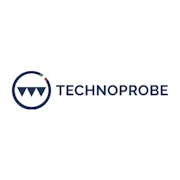
HQ: Italy
Market cap ($B): 4.4
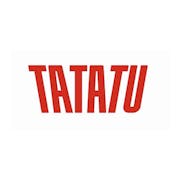
HQ: Italy
Market cap ($B): 2.7
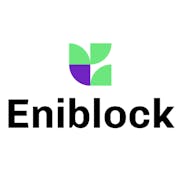
HQ: France
Market cap ($M): 142
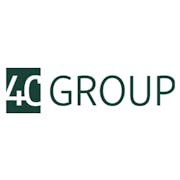
HQ: Sweden
Market cap ($M): 128
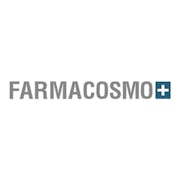
HQ: Italy
Market cap ($M): 98
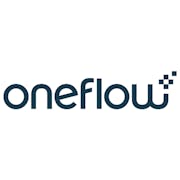
HQ: Sweden
Market cap ($M): 87
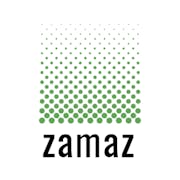
HQ: United Kingdom
Market cap ($M): 78

HQ: Switzerland
Market cap ($M): 52

HQ: Sweden
Market cap ($M): 47
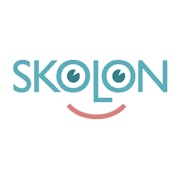
HQ: Sweden
Market cap ($M): 35
In 2022, the SPAC market saw a total of 10 European tech companies complete a de-SPAC, down from 14 in 2021. Similar to the broader market, the first half of 2022 saw the most activity with a total of seven European tech companies completing a de-SPAC process across both European and US exchanges. These 7 companies had a combined enterprise value of $30B, but this was mainly driven by the de-SPAC of Polestar that accounted for more than 90% of the combined value. The second half of 2022 to date has seen just three de-SPACs of European tech companies with a combined $1.9B of enterprise value. Notable European de-SPACs this year included Benevolent AI ($1.1B) and Deezer ($1B) to European markets, and Polestar ($27.4B) , SuperGroup ($4.7B) and Allego ($2.4B) to the US markets.
| Company | Country HQ | Acquisition corporation | VC backed | De-SPAC date | Exchange | Market Cap on First Pricing Date ($M) |
|---|---|---|---|---|---|---|
| Polestar | Sweden | Gores Guggenheim | Yes | 23 Jun 2022 | NASDAQ | 27,417 |
| Selina | United Kingdom | BOA Acquisition Corp | Yes | 27 Oct 2022 | NASDAQ | 1,200 |
| BenevolentAI | United Kingdom | Odyssey Acquisition | Yes | 22 Apr 2022 | Euronext (Amsterdam) | 1,190 |
| Azerion | Netherlands | European FinTech IPO Company 1 | No | 1 Feb 2022 | Euronext (Amsterdam) | 1,152 |
| Deezer | France | I2PO Société anonyme | Yes | 5 Jul 2022 | Euronext (Paris) | 695 |
| Allego | Netherlands | Spartan Acquisition Corp. III | Yes | 16 Mar 2022 | NYSE | 676 |
| Super Group | United Kingdom | Sports Entertainment Acquisition Corp. | No | 27 Jan 2022 | NYSE | 536 |
| Celadon Pharmaceuticals | United Kingdom | Summerway Capital | No | 28 Mar 2022 | LSE AIM | 118 |
| Ondo InsurTech | United Kingdom | Spinnaker Acquisitions | No | 15 Mar 2022 | LSE AIM | 9 |
| RightBridge | Sweden | Agilit Holding | Yes | 6 Oct 2022 | OMX Nordic (Stockholm) | 3 |
When assessing whether SPACs provide an alternative route to market for European tech companies, the after-market performance must be considered.
In all periods except 2022, de-SPACs have been followed by approximately 30 percentage points worse performance compared to IPOs in the same years. The de-SPAC cohort of 2021 has the worse performance, with Babylon and Cazoo down 95% and 97% respectively.
With a material amount of capital still sitting in SPACs across Europe, it will be interesting to see whether these underperforming de-SPACs will lead to shells returning capital to investors, instead of completing a combination.
SPAC activity cooled this year, being hit hard by the wider market slowdown. However, there is still an aggregate of $6.3B of capital in listed SPACs to be used to target European tech companies, with $5.5B expiring in 2023.
SPACs themselves will need to actively scour Europe for investment opportunities to deploy this capital - though that could be a tough task with founders and shareholders of European tech companies now sceptical of this route to the public markets given the poor performance and general experience of those that took this path in recent years.
One barrier in the IPO process is how complicated it is to go public. While still maintaining necessary financial and risk-related rigour, there have been recent policy initiatives attempting to reduce the unnecessary administrative burden on scale-ups. How effective these attempts will be - and whether they become a more popular policy choice across Europe - remains to be seen.
Curious? Check out more details here.
This is an incomplete list, compiled to give a flavour of policy initiatives across Europe supporting startups and venture capital. Want to make it more complete? Please share your contribution here.
| Country | Title | Status |
|---|---|---|
| Germany 🇩🇪 | Future Financing Act | Announced 📣 |
| UK 🇬🇧 | Changes to prospectus regime | Announced 📣 |